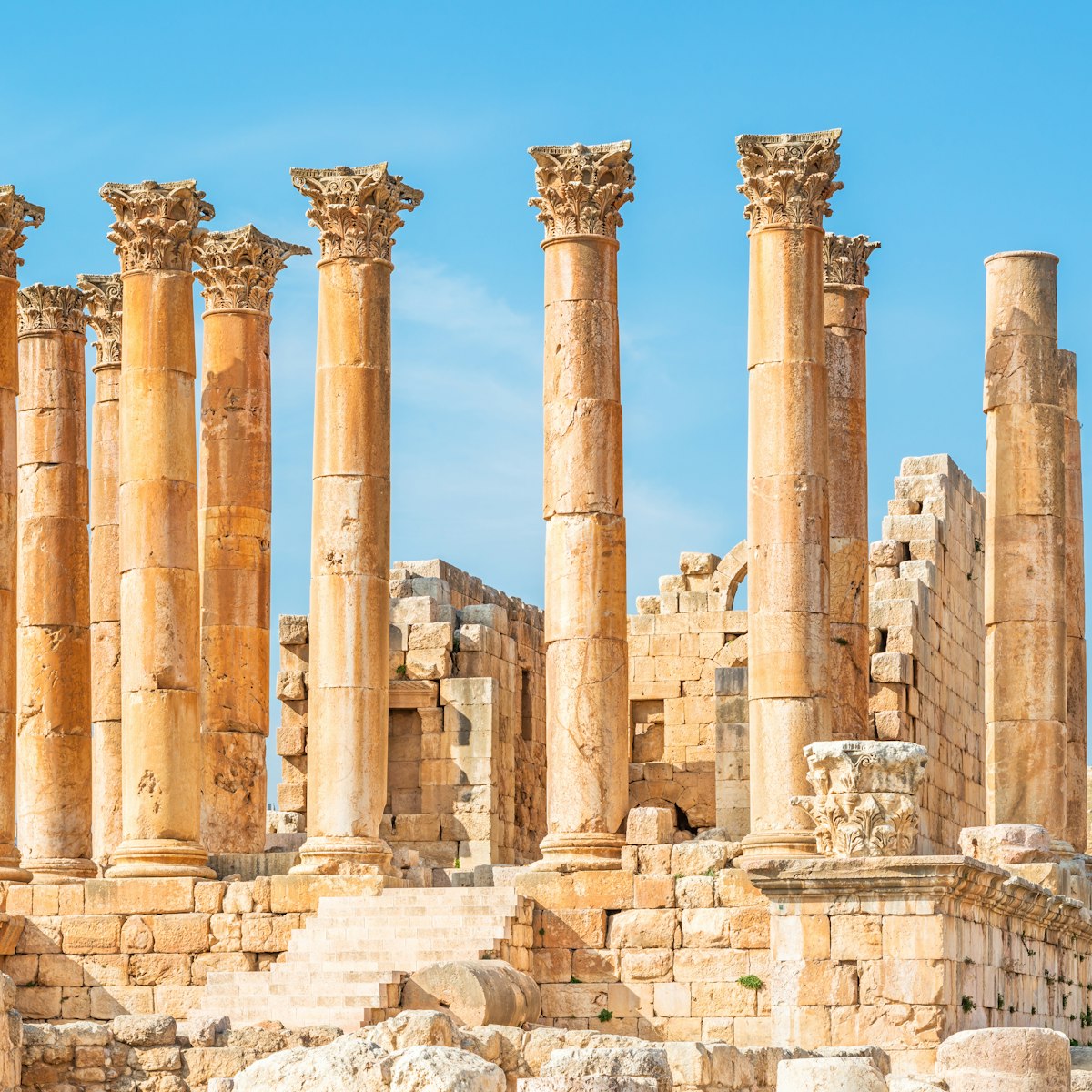This historic castle was built atop Mt ‘Auf (1250m) between 1184 and 1188 by one of Saladin’s generals, ‘Izz ad Din Usama bin Munqidh (who was also Saladin’s nephew). The castle commands views of the Jordan Valley and three wadis leading into it, making it an important strategic link in the defensive chain against the Crusaders and a counterpoint to the Crusader Belvoir Fort on the Sea of Galilee in present-day Israel and the Palestinian Territories.
The castle was enlarged in 1214 with the addition of a new gate in the southeastern corner, and once boasted seven towers as well as a 15m-deep dry moat. With its hilltop position, Qala’at Ar Rabad was one in a chain of beacons and pigeon posts that enabled messages to be transmitted from Damascus to Cairo in a single day. The rearing of pigeons is still a popular pastime in the area.
After the Crusader threat subsided, the castle was largely destroyed by Mongol invaders in 1260, only to be almost immediately rebuilt by the Mamluks. In the 17th century an Ottoman garrison was stationed here, after which it was used by local villagers. Earthquakes in 1837 and 1927 badly damaged the castle, though slow and steady restoration is continuing.
Note that there is a useful explanation in English just inside the main gate, and a small museum containing pots, snatches of mosaics and some intriguing medieval hand grenades. Apart from this, nothing else in the castle is signposted, although not much explanation is needed to bring the place to life, especially given that the views from these lofty heights are nothing short of spectacular.
The castle is a tough 3km uphill walk from the town centre, but minibuses very occasionally go to the top (about 100 fils). Alternatively, take a taxi from Ajloun (JD1 to JD2 each way). The visitor centre and ticket office is about 500m downhill from the castle entrance; there's a small scale model of the castle on display here and, perhaps more usefully, clean toilets.








